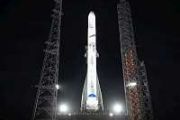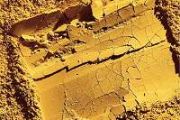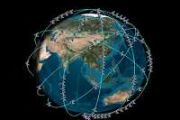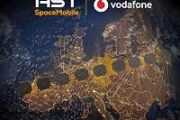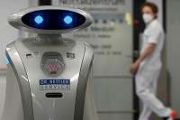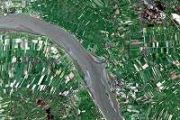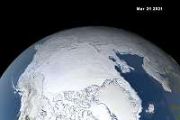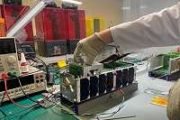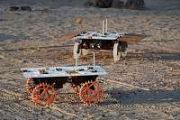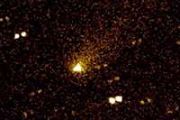
Copernical Team
Daily data delivery milestone achieved
 Kleos Space has reached the milestone of daily product delivery collected from a strategically critical area of interest to its early adopter customers. RF data is collected by the Vigilance Mission (KSF1) satellites and is then processed through Kleos systems to generate intelligence products.
The Vigilance Mission RF data collection satellites are in a sun synchronous low Earth orbit ena
Kleos Space has reached the milestone of daily product delivery collected from a strategically critical area of interest to its early adopter customers. RF data is collected by the Vigilance Mission (KSF1) satellites and is then processed through Kleos systems to generate intelligence products.
The Vigilance Mission RF data collection satellites are in a sun synchronous low Earth orbit ena LeoLabs expands weather radar coverage of Southern Hemisphere in the Indo-Pacific region
 LeoLabs, the leading commercial provider of Space Domain Awareness (SDA) services and low Earth orbit (LEO) mapping, announced the commissioning of the LeoLabs West Australian Space Radar (WASR). This radar site, located in Western Australia, adds critical coverage of the Southern Hemisphere in the Indo-Pacific region.
WASR is the latest addition to LeoLabs network of phased array space ra
LeoLabs, the leading commercial provider of Space Domain Awareness (SDA) services and low Earth orbit (LEO) mapping, announced the commissioning of the LeoLabs West Australian Space Radar (WASR). This radar site, located in Western Australia, adds critical coverage of the Southern Hemisphere in the Indo-Pacific region.
WASR is the latest addition to LeoLabs network of phased array space ra TAU establishes the first satellite observatory for quantum optical communication
 The Center for Quantum Science and Technology at Tel Aviv University has built the first ground station in Israel - and among the most advanced in the world - for tracking, sensing, hyperspectral imaging, and optical and quantum communication with satellites in orbit around the Earth. The station includes a satellite observatory dome with a diameter of 4.25 meters, a tracking system, a primary h
The Center for Quantum Science and Technology at Tel Aviv University has built the first ground station in Israel - and among the most advanced in the world - for tracking, sensing, hyperspectral imaging, and optical and quantum communication with satellites in orbit around the Earth. The station includes a satellite observatory dome with a diameter of 4.25 meters, a tracking system, a primary h Researchers devise a new path toward 'quantum light'
 Researchers have theorised a new mechanism to generate high-energy 'quantum light', which could be used to investigate new properties of matter at the atomic scale.
The researchers, from the University of Cambridge, along with colleagues from the US, Israel and Austria, developed a theory describing a new state of light, which has controllable quantum properties over a broad range of frequ
Researchers have theorised a new mechanism to generate high-energy 'quantum light', which could be used to investigate new properties of matter at the atomic scale.
The researchers, from the University of Cambridge, along with colleagues from the US, Israel and Austria, developed a theory describing a new state of light, which has controllable quantum properties over a broad range of frequ Spacemind launches three Italian Nanosatellites into orbit
 Spacemind, the space division of Italian company NPC, has achieved great success with a series of space launches. The three Italian nanosatellites, DanteSat, Futura-SM1, and Futura-SM3, have been successfully launched into orbit. This has also validated the operation of the new SMPod cubesat deployer, on-board equipments, and a larger version of the Artica deorbiting sail.
Nicolo Benini, M
Spacemind, the space division of Italian company NPC, has achieved great success with a series of space launches. The three Italian nanosatellites, DanteSat, Futura-SM1, and Futura-SM3, have been successfully launched into orbit. This has also validated the operation of the new SMPod cubesat deployer, on-board equipments, and a larger version of the Artica deorbiting sail.
Nicolo Benini, M Too hot and too cold; now Moon it could be just right for humans
 With temperatures on the moon ranging from minus 410 to a scorching 250 degrees Fahrenheit, it's an understatement to say that humans will need habitats with heat and air conditioning to survive there long term.
But heating and cooling systems won't be effective enough to support habitats for lunar exploration or even longer trips to Mars without an understanding of what reduced gravity do
With temperatures on the moon ranging from minus 410 to a scorching 250 degrees Fahrenheit, it's an understatement to say that humans will need habitats with heat and air conditioning to survive there long term.
But heating and cooling systems won't be effective enough to support habitats for lunar exploration or even longer trips to Mars without an understanding of what reduced gravity do For the First Time Hubble Directly Measures Mass of a Lone White Dwarf
 Astronomers using NASA's Hubble Space Telescope have for the first time directly measured the mass of a single, isolated white dwarf - the surviving core of a burned-out, Sun-like star.
Researchers found that the white dwarf is 56 percent the mass of our Sun. This agrees with earlier theoretical predictions of the white dwarf's mass and corroborates current theories of how white dwarfs evo
Astronomers using NASA's Hubble Space Telescope have for the first time directly measured the mass of a single, isolated white dwarf - the surviving core of a burned-out, Sun-like star.
Researchers found that the white dwarf is 56 percent the mass of our Sun. This agrees with earlier theoretical predictions of the white dwarf's mass and corroborates current theories of how white dwarfs evo Astronauts use spacewalk to continue upgrade of ISS solar arrays
 Astronauts from NASA and Japan Aerospace Exploration Agency stepped out from the International Station to begin a spacewalk early Thursday to complete work started by another work team almost two weeks ago - part of a project to upgrade the station's power generation systems.
NASA's Nicole Mann and JAXA's Koichi Wakata were tasked with finishing work on a mounting platform on one of th
Astronauts from NASA and Japan Aerospace Exploration Agency stepped out from the International Station to begin a spacewalk early Thursday to complete work started by another work team almost two weeks ago - part of a project to upgrade the station's power generation systems.
NASA's Nicole Mann and JAXA's Koichi Wakata were tasked with finishing work on a mounting platform on one of th The bubbling universe: A previously unknown phase transition in the early universe
 Think of bringing a pot of water to the boil: As the temperature reaches the boiling point, bubbles form in the water, burst and evaporate as the water boils. This continues until there is no more water changing phase from liquid to steam.
This is roughly the idea of what happened in the very early universe, right after the Big Bang, 13.7 billion years ago.
The idea comes from partic
Think of bringing a pot of water to the boil: As the temperature reaches the boiling point, bubbles form in the water, burst and evaporate as the water boils. This continues until there is no more water changing phase from liquid to steam.
This is roughly the idea of what happened in the very early universe, right after the Big Bang, 13.7 billion years ago.
The idea comes from partic First step toward predicting lifespan of electric space propulsion systems
 Electric space propulsion systems use energized atoms to generate thrust. The high-speed beams of ions bump against the graphite surfaces of the thruster, eroding them a little more with each hit, and are the systems' primary lifetime-limiting factor. When ion thrusters are ground tested in an enclosed chamber, the ricocheting particles of carbon from the graphite chamber walls can also redeposi
Electric space propulsion systems use energized atoms to generate thrust. The high-speed beams of ions bump against the graphite surfaces of the thruster, eroding them a little more with each hit, and are the systems' primary lifetime-limiting factor. When ion thrusters are ground tested in an enclosed chamber, the ricocheting particles of carbon from the graphite chamber walls can also redeposi 



